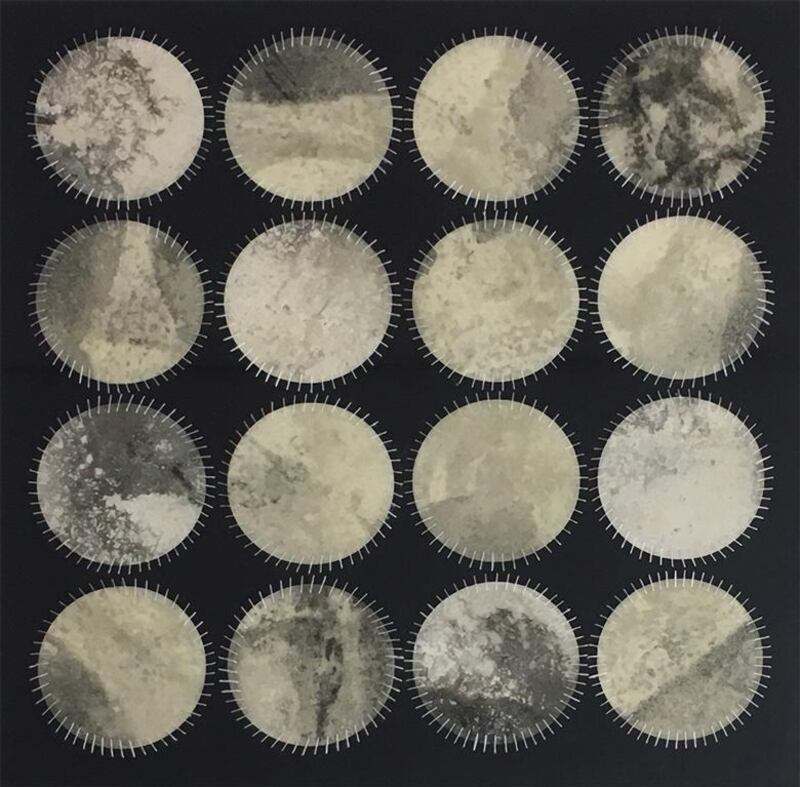When Pakistani artist Rasheed Araeen first began making minimalist sculptures in the 1960s, the importance of his pioneering work was not immediately recognised.
“No one ever really paid much attention,” says Kim-ling Humphrey, a manager at Araeen’s Hong Kong gallery Rossi and Rossi. “They would only ever read it in a post-colonial sense as a Pakistani artist and not really see it as an aesthetic work in its own right.”
That seems set to change with an increasing international focus on work produced by Pakistani artists, evident at the recently concluded Art Basel Hong Kong fair (ABHK).
Pakistani artists have been working furiously for decades, and while they are regularly featured in the UAE’s art fairs, only a select few, such as Rashid Rana, have won recognition on a global scale – until now.
The Asian fair brought together former engineer Araeen and rising star Waqas Khan in the Encounters section, which involved 17 large-scale installations dotted around the walkway cross-sections to confront and challenge visitors.
Areen’s House of Red Bamboo was a nod to the dizzying scale of construction in the high-rise city, mirroring the bamboo scaffolding often seen erected in Hong Kong, while reflecting on geometric forms and a utopian ideology.
Lahore-based Khan, meanwhile, trained in miniature painting, explored form on a different scale with In the Name of God II – thousands, perhaps millions of his tiny pen strokes uniting in a meditation on spirituality and perfect symmetry, unfolding over a giant parchment made of handmade wasli paper, which was historically used to paint miniatures.
“With Pakistan there has always been a growing interest because of its geopolitical position,” says Karachi-born artist Naiza Khan, whose Boudicca-like armour sculptures cast in metal, exhibited at Rossi and Rossi’s booth at the fair, question themes of femininity, repression and the female form.
She practised and taught in Karachi for more than two decades before moving to London two years ago. “People want to see what else is happening and what other stories are there.
“From within the institutional art space and art market, individuals are picking at that big mountain and slowly making works visible.”
Biennales are set to go ahead in Karachi and Lahore this year.
For Projjal Dutta, a partner in New York’s Aicon Gallery, which has been championing Pakistani artists for years, recognition cannot come soon enough. “Pakistan is like Berlin in 1936,” he says. “The political climate is on a tripwire all the time. That provides an edge.”
Conflict and tension, he says, spark creativity. He compares the art scene to the end of the Mughal empire, the “high point of Urdu poetry even though the government and empire were going down the tubes”.
At ABHK, Aicon has an eye-catching booth featuring one of Anila Quayyum Agha’s contemplative black cube sculptures, taking its inspiration from the Kaaba and dazzling with its light and geometric forms, as well as her laser-cut paper works.
By contrast, the booth also features post-apocalyptic landscapes by British-Pakistani artist Saad Qureshi. They might be at opposite ends of the spectrum, but both represent soul-searching treatises on spirituality.
What is fascinating about the rising breed of Pakistani artists is how many have taken traditional techniques such as miniature painting and interpreted them in their own way.
Lahore-based conceptual artist Hamra Abbas, exhibiting in Lawrie Shabibi’s booth at the fair, takes everyday subject matter – the migrant workers who form the backbone of life in Singapore – and elevates their status with a series of detailed miniature paintings on silk, marrying techniques she learnt in Pakistan with Chinese gongbi painting.
Alexie Glass-Kantor, curator of the Encounters section in ABHK, was surprised by the “level of candid engagement and openness” she discovered on a recent trip to Pakistan, and is planning to return in November to explore further.
She went to Islamabad last year as a judge for an art competition staged by the Swiss Agency for Development and Cooperation along with the United Nations and met young art students to talk about their work.
“They completely articulate the complexity of the context in Pakistan,” she says. “There was an openness that was really disarming for me.
“There is a great new generation doing great performance work. I am excited to go back.”
artslife@thenational.ae





